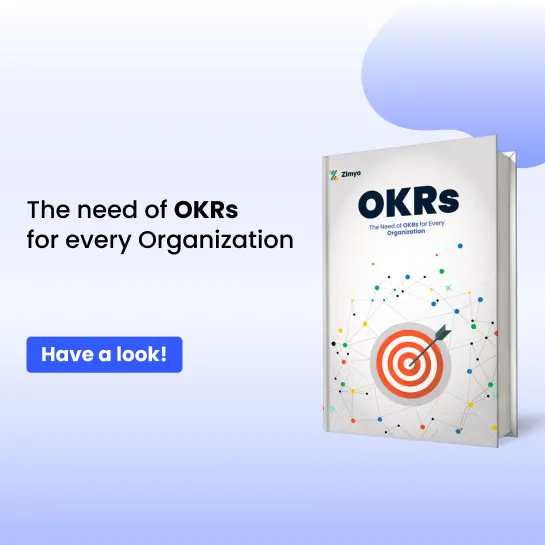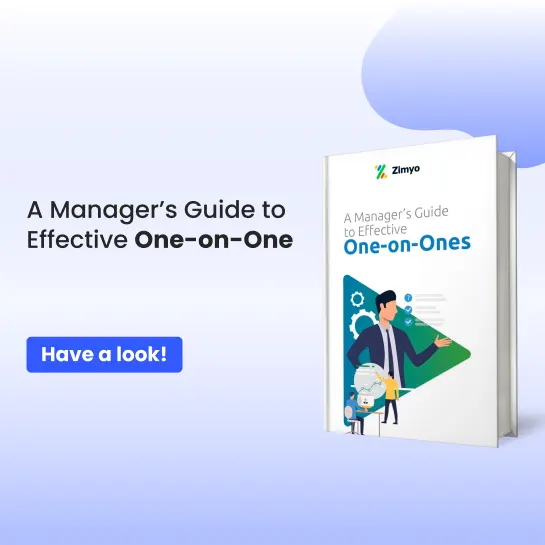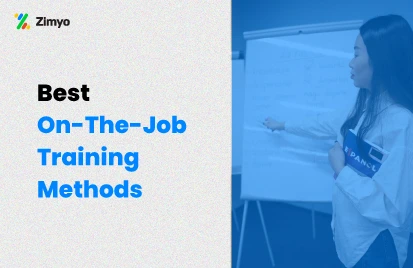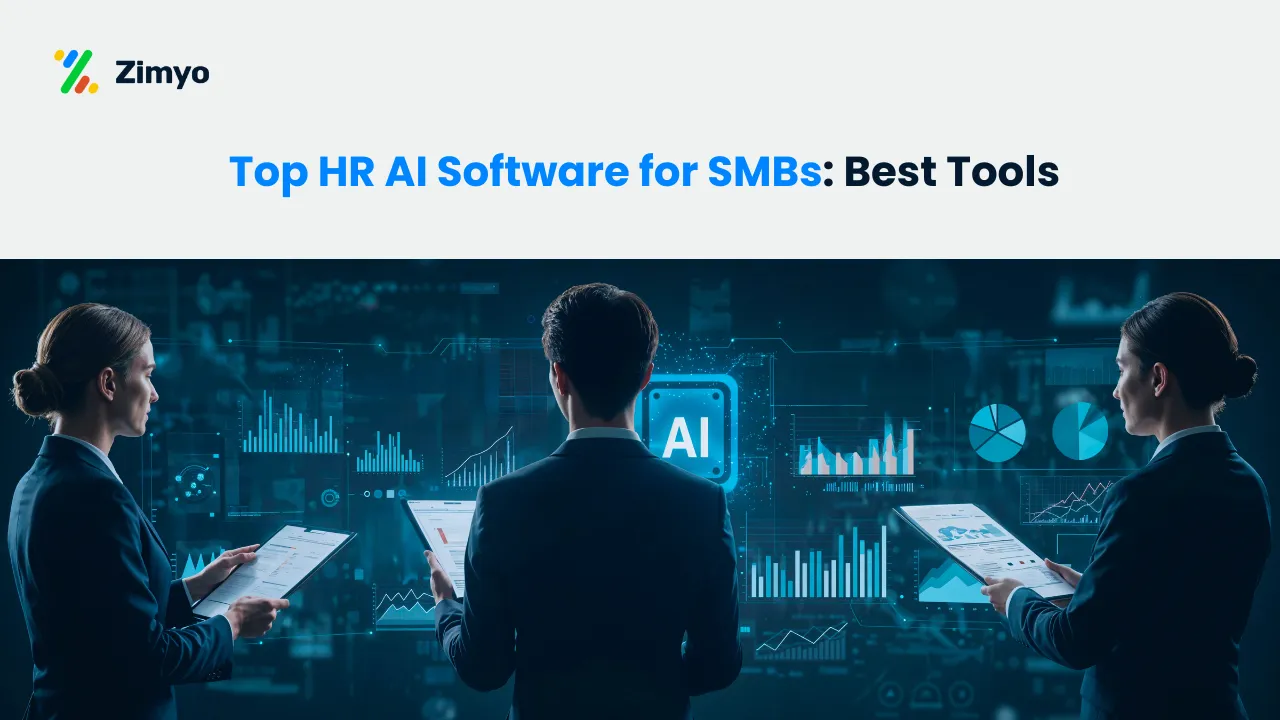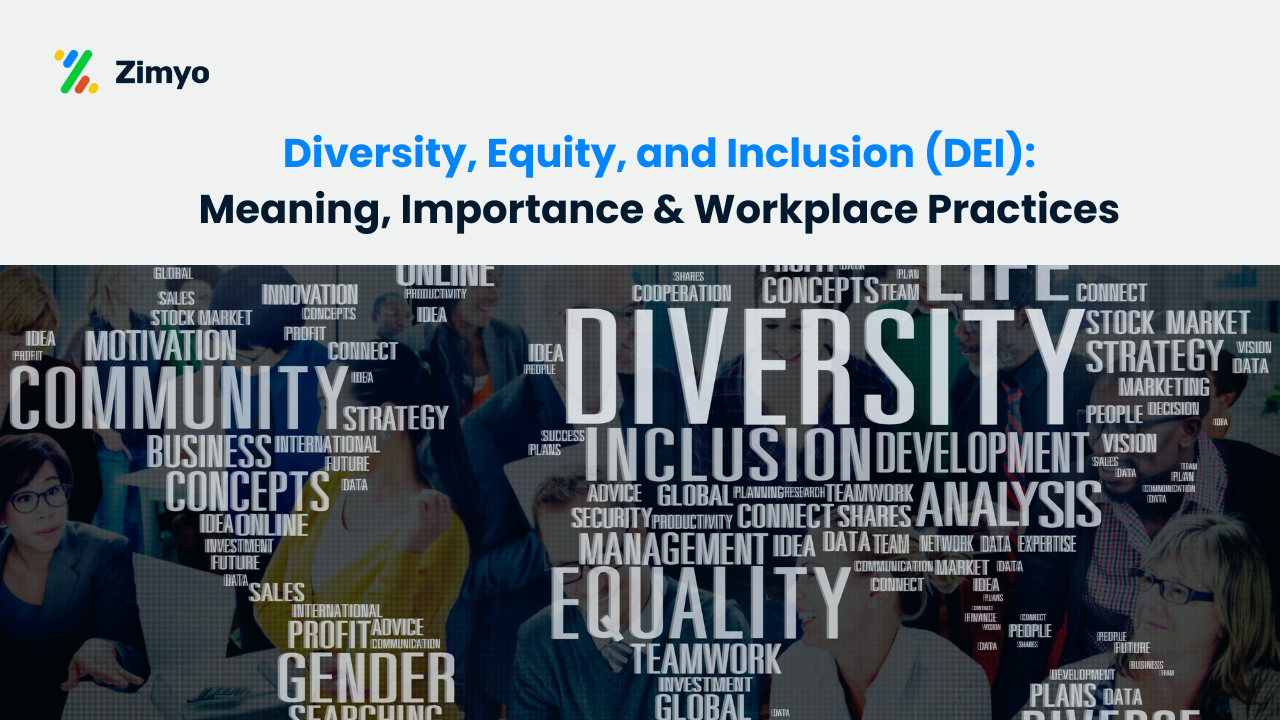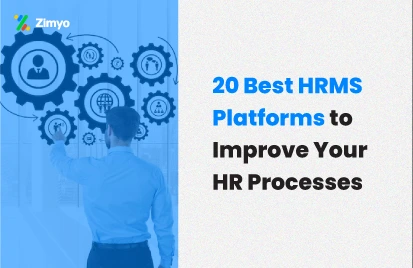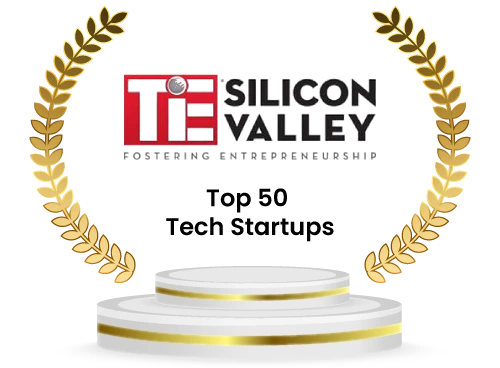Let’s say you run a small café with 25 employees. Every week, you’re juggling shift schedules, approving leave requests in between, and making sure everyone is paid without any error. and add to that, you’re answering endless employee queries like, “Can I swap my shift with Sarah?” or “Why is my overtime missing from the payslip?”. This is what you deal with without HR software.
This constant back-and-forth eats up your valuable time, time you could spend growing your café. Which is why workforce management software can be your savior. Take it as your smart digital assistant that handles employee scheduling, time tracking, payroll, and even talent management just for you.
For small businesses, it proves to be a game changer. Opposed to spreadsheets and sticky notes, you get an organized, automated, and stress-free way of managing your workforce.
While reading this blog, you’ll learn what workforce management software is, the best options available in 2025, and how you can pick the right one for your business.
What is Workforce Management Software?
In easy terms, workforce management software (WFM software) is a digital tool which allows you to manage staff schedule, attendance, track shifts and ensure compliance along with a smooth payroll system. Basically, automating tasks that otherwise take a lot of your time.
Think of it as a labor management system + HR software + scheduling tool bundled all together.
Common Features:
- Workforce scheduling software → Create and manage employee shifts without conflicts.
- Time & attendance tracking → Track work hours, breaks, and overtime accurately.
- Payroll integration → No more paycheck errors or manual calculations.
- Leave management → Approve or reject leave requests in seconds.
- Workforce engagement software → Boost employee morale with self-service portals.
- Talent management system → Track employee growth, training, and appraisals.
It’s like moving from driving a car without GPS to using Google Maps running smoother, faster, and smarter.
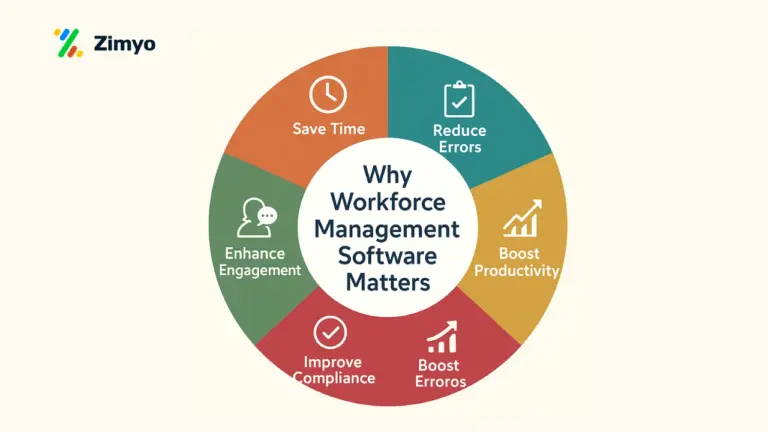
List of Top 13 Workforce Management Software for Small Businesses
- Zimyo
- ADP
- Rippling
- Humanity
- When I Work
- Asure
- Zoho People
- UKG Pro Workforce Management
- Dayforce
- Bamboo HR
- Gusto
- HiBob
- Teamwork
Best Workforce Management Software for Small Business: In Detail
Here’s our handpicked list of the top WFM software to consider:
Zimyo is few of the top integrated workforce management system, equally suitable for small and medium-sized businesses globally. It combines HRMS, payroll, attendance tracking, and employee engagement tools into one intuitive platform. With features like automated workforce scheduling software, self-service portals, and AI-driven analytics, Zimyo helps businesses manage everything from hiring to retirement.
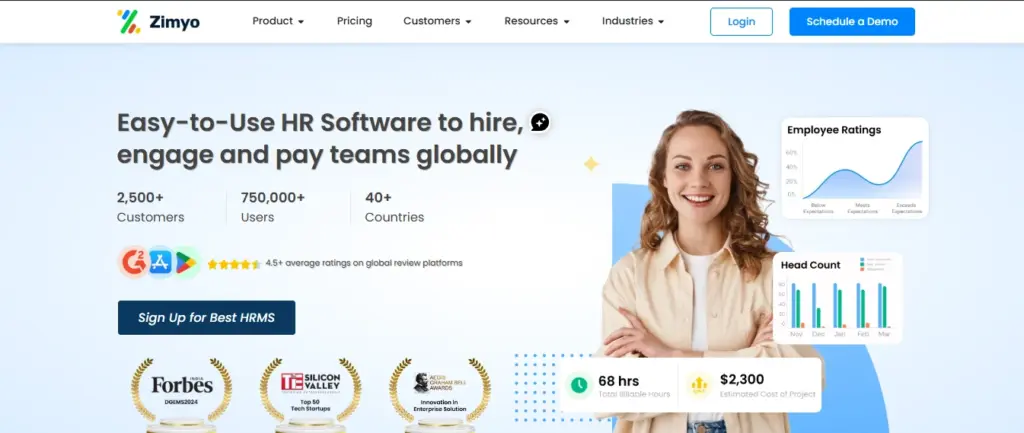
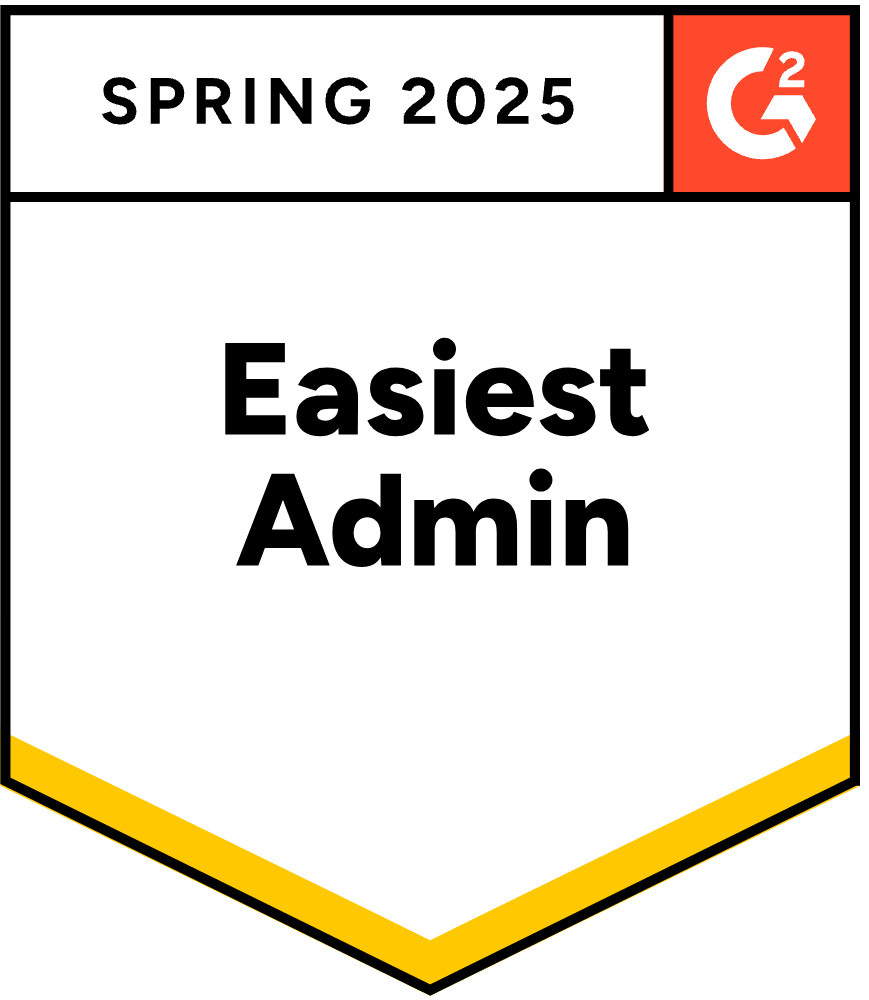
Specifications:
- HRMS + Payroll + Attendance in one system
- Employee self-service portal
- Mobile app for managers and employees
- Performance and talent management system
- Compliance-ready payroll
- Engagement & feedback tools
Pros:
- Low cost of ownership for small businesses
- Very customizable and scalable
- Mobile-friendly interface
- Excellent employee engagement features
Cons:
- Advanced reporting may require higher-tier plans
- Currently stronger in Asia; limited global recognition
2. ADP Workforce Now
ADP is well known in HR and payroll, for its powerful labor management system for small to enterprise-level businesses. It stands out in payroll compliance, workforce scheduling, and HRIS integration. Becoming the ideal requirement for companies with complex compliance needs.
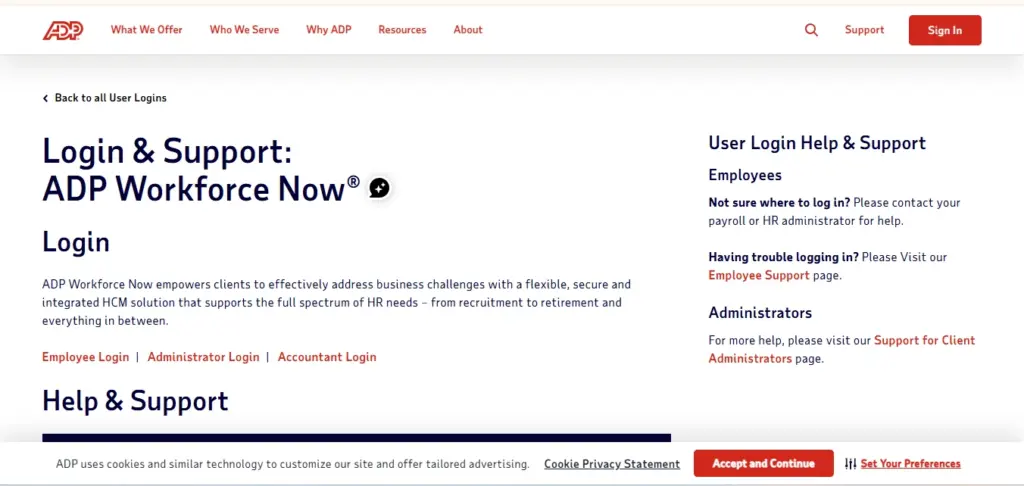
Specifications:
- Full-service payroll & tax compliance
- HRIS software integrations
- Workforce scheduling software
- Employee benefits management
Pros:
- Trusted brand with decades of expertise
- Strong compliance and labor law support
- Scales easily from small to large businesses
- Rich analytics & reporting
Cons:
- Pricing is higher compared to other WFM software
- Interface can feel outdated for new users
3. Rippling
Rippling is a contemporary HR software that combines HR, IT, and payroll within a single platform. It automates workforce management activities like onboarding, payroll, and compliance, alongside managing devices and apps which is perfect for tech-first companies.
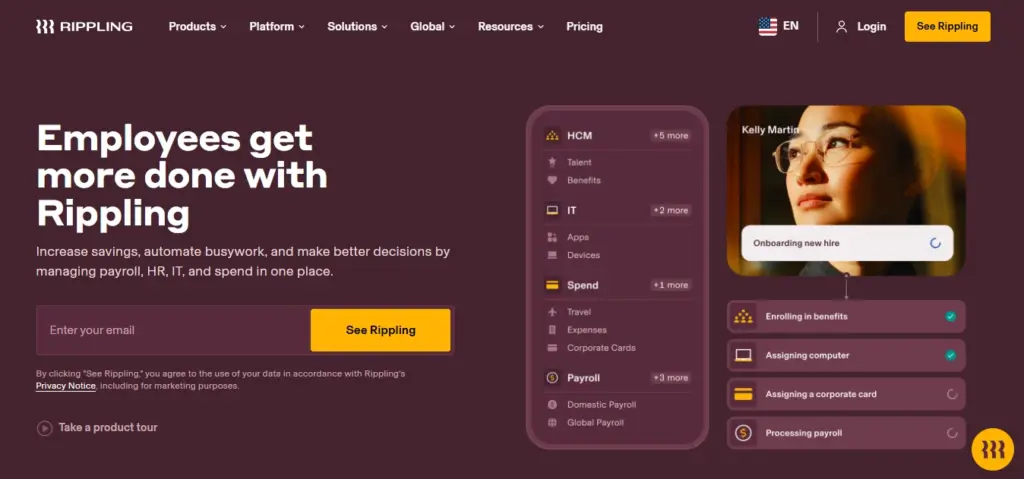
Specifications:
- HR, IT, and payroll automation
- Employee onboarding & offboarding
- Time & attendance management
- Workforce engagement software
- App & device management for remote teams
Pros:
- Unique HR + IT management combo
- Excellent for startups and remote-first organizations
- User-friendly and sleek interface
- Fast employee onboarding process
Cons:
- Expensive for small businesses with limited needs
- Some advanced HR features require add-ons
4. Humanity
Humanity is a workforce scheduling software aimed at shift-based enterprises such as retail, hospitality, and healthcare. It’s simple drag-and-drop scheduler and compliance notifications minimize scheduling hassles.
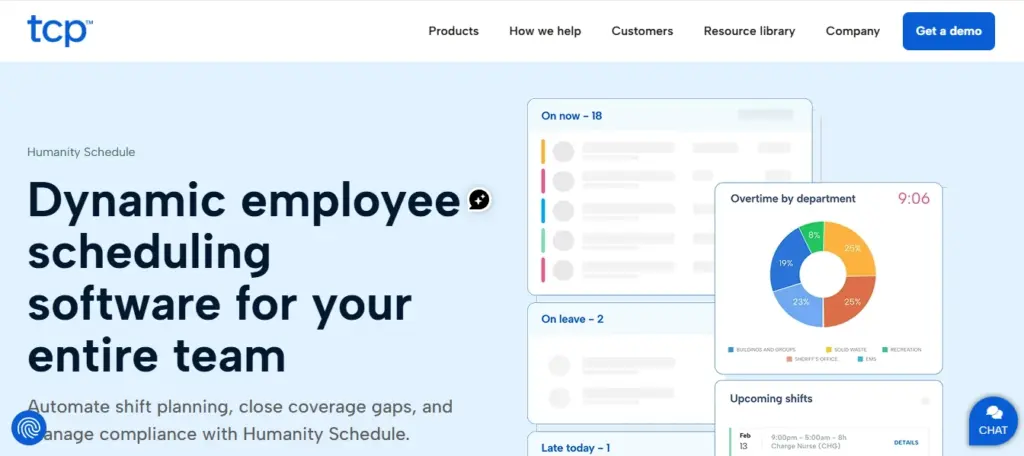
Specifications:
- Shift scheduling with drag-and-drop
- Time clock & attendance system
- Compliance alerts (breaks, overtime)
- Employee self-service access
- Mobile app for shift swaps & updates
Pros:
- Excellent for shift-heavy industries
- Reduces scheduling conflicts
- Mobile-friendly for on-the-go teams
- Easy employee communication
Cons:
- Limited beyond scheduling & attendance
- Payroll integration is not as strong
5. When I Work
When I Work is a WFM software built for small businesses managing hourly employees. It focuses on scheduling, team communication, and time tracking—all in one simple platform.
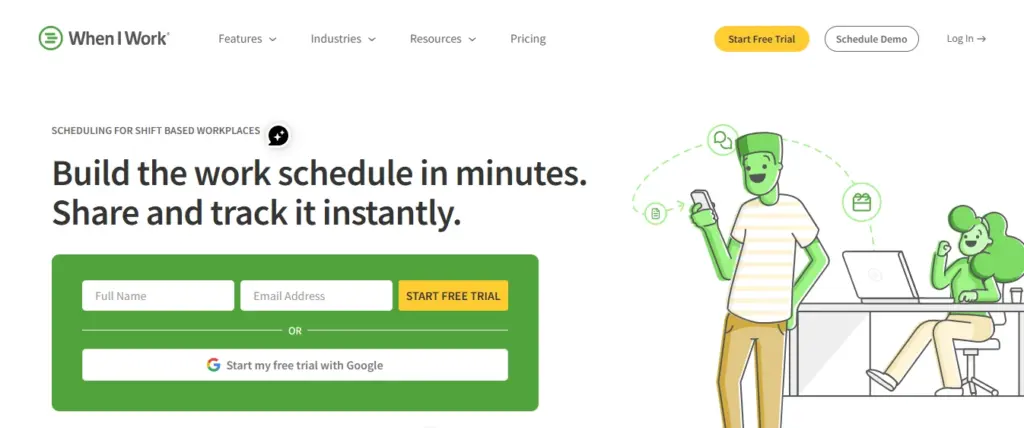
Specifications:
- Employee shift scheduling
- Time tracking & attendance
- Team messaging & notifications
- Mobile workforce management tools
- Affordable subscription pricing
Pros:
- Very easy to use for small teams
- Affordable for startups and SMBs
- Strong mobile app
- Excellent for managing hourly staff
Cons:
- Limited HR or payroll features
- Not ideal for complex enterprises
I was able to implement the platform on my own. It helps in assigning the tasks to other employees, conducting surveys and polls, and much more. The ease of use and self-onboarding is something that I would like to appreciate.
Sonali, Kommunicate
Zimyo simplifies attendance management for our organization. The leave and attendance are so streamlined that we have never faced any difficulties with the system.
Anurag, Eggoz Nutrition
6. Asure
Asure is a labor management system offering HR, payroll, and compliance solutions to medium and small-sized enterprises. It’s particularly efficient in maintaining compliance with labor laws and tax reports.
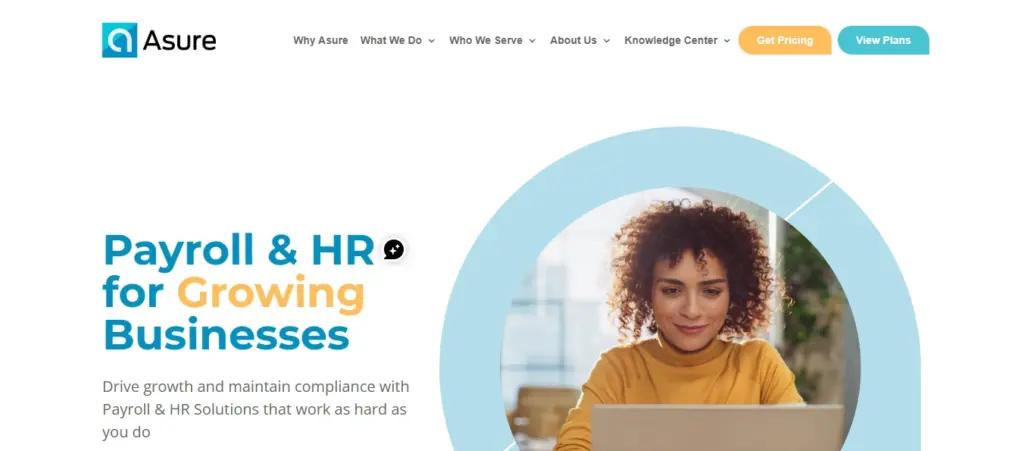
Specifications:
- Payroll & tax compliance
- Time & attendance tracking
- HRIS & HR software tools
- Workforce scheduling software
- Analytics dashboard
Pros:
- Excellent compliance support
- Affordable for SMBs
- Good payroll and HR integration
- Reliable reporting features
Cons:
- Interface is less modern
- Customer support can be slow at times
7. Zoho People
Zoho People is a cloud HR software that has workforce scheduling, HRMS, and employee engagement modules. Being a part of the Zoho suite, it integrates well with other Zoho applications.
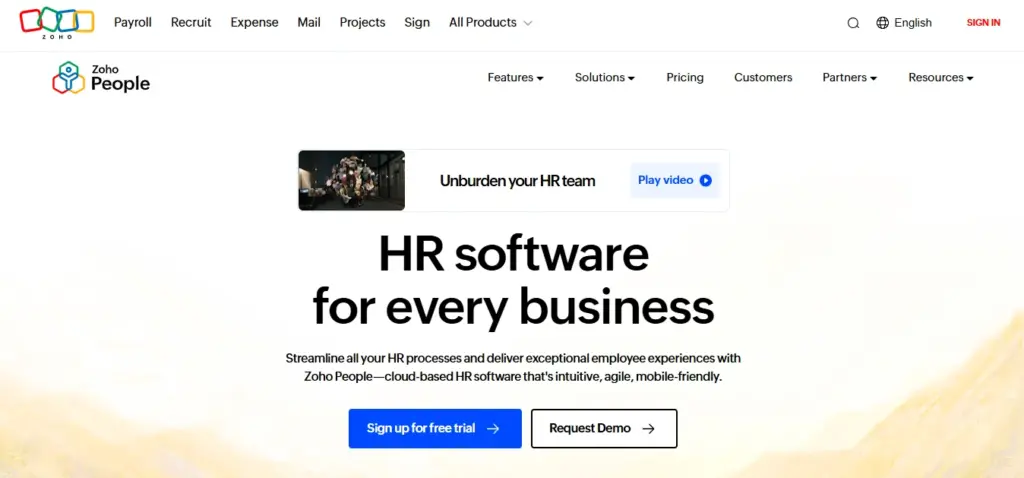
Specifications:
- Core HR functions (leave, attendance, shifts)
- Performance & talent management system
- Workforce engagement software
- Mobile accessibility
- Integrates with Zoho ecosystem
Pros:
- Affordable for small businesses
- Seamless integration with Zoho apps
- Strong employee engagement features
- Easy-to-use interface
Cons:
- Can feel basic for advanced HR needs
- Customer support is sometimes slow
8. UKG Pro Workforce Management (Ultimate Kronos Group)
UKG Pro is an end-to-end integrated workforce management system designed for large-scale workforce operations. It provides leading-edge labor forecasting, scheduling, and compliance solutions.
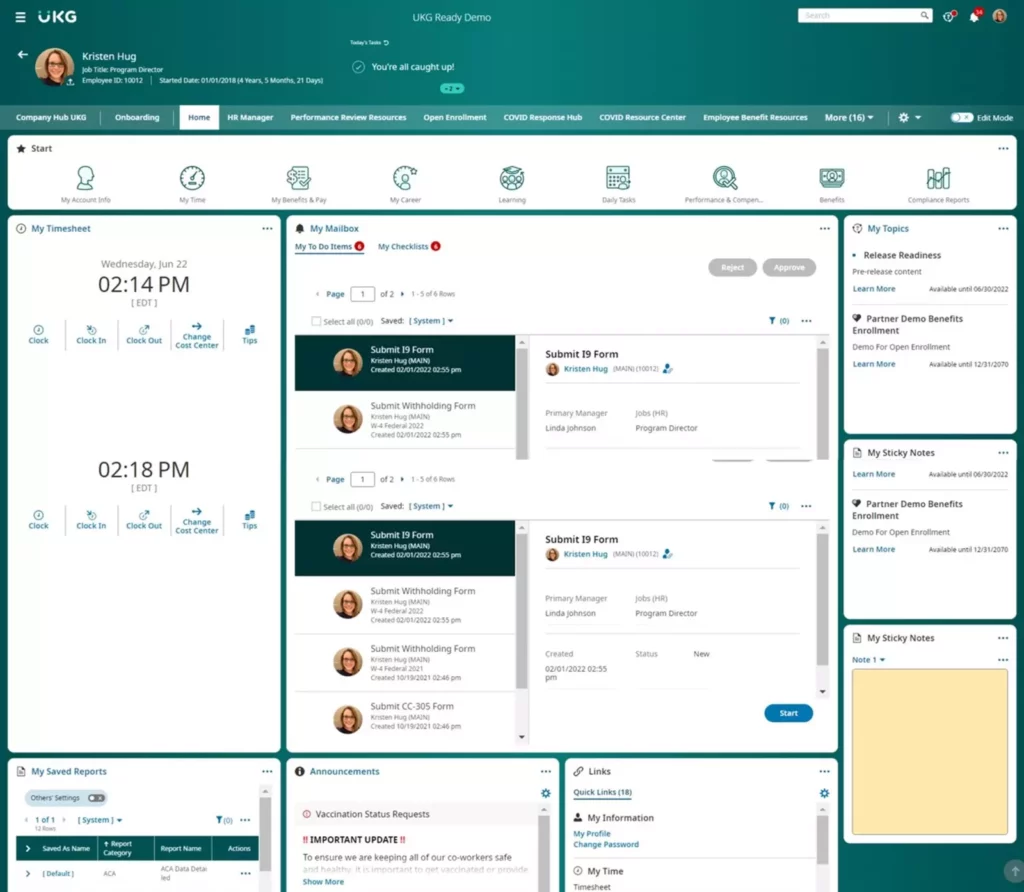
Specifications:
- Workforce scheduling software
- HRIS software with payroll & benefits
- AI-driven workforce analytics
- Labor forecasting tools
- Mobile workforce management tools
Pros:
- Industry leader in workforce scheduling
- Strong compliance management
- Excellent reporting & analytics
- Scalable for large enterprises
Cons:
- Expensive for small businesses
- Complex implementation process
9. Dayforce (Ceridian)
Dayforce is an all-in-one HRMS and WFM software that handles payroll, scheduling, compliance, and workforce engagement. It is highly preferred in industries with strict labor regulations.
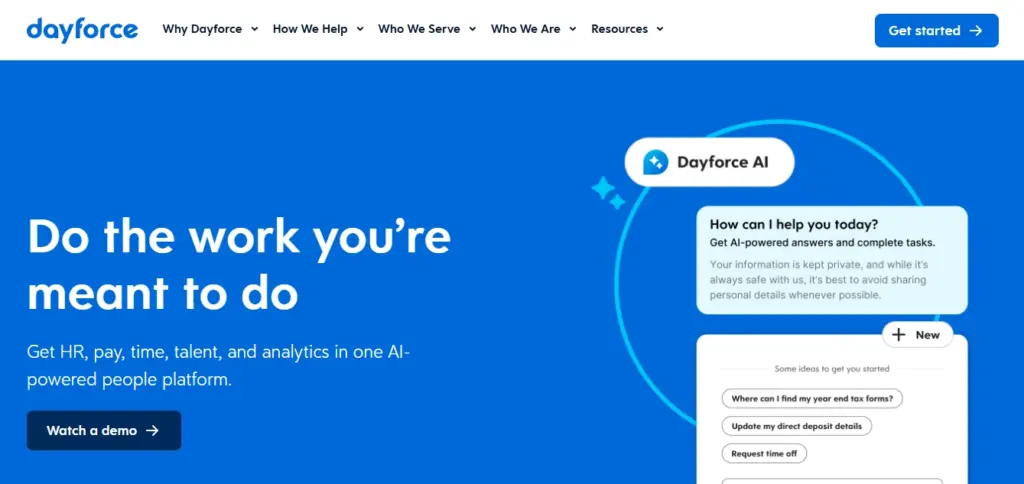
Specifications:
- HRMS with payroll & scheduling
- Compliance monitoring
- Employee engagement software
- Mobile-friendly HRIS tools
- Workforce analytics
Pros:
- Excellent compliance & payroll accuracy
- All-in-one HR + workforce solution
- Scalable for mid-to-large businesses
- Good reporting features
Cons:
- Steeper learning curve
- Can be expensive for smaller teams
10. BambooHR
BambooHR is among the top-rated HR software systems for small businesses. It emphasizes employee experience, HRIS software capabilities, and talent management system features.
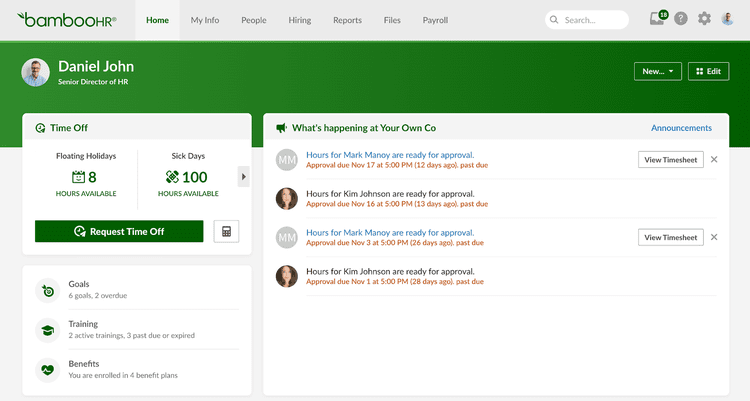
Specifications:
- Core HR functions (leave, employee data)
- Performance & talent management
- Onboarding & offboarding tools
- Employee engagement features
- Mobile app for employees
Pros:
- Very user-friendly
- Great for small to medium businesses
- Strong focus on employee experience
- Scalable HRMS
Cons:
- Lacks advanced workforce scheduling tools
- Payroll available only in certain regions
11. Gusto
Gusto is a small business payroll and HR software. It is best suited for payroll automation, tax compliance, and benefits management and hence one of the most popular small business HR software.
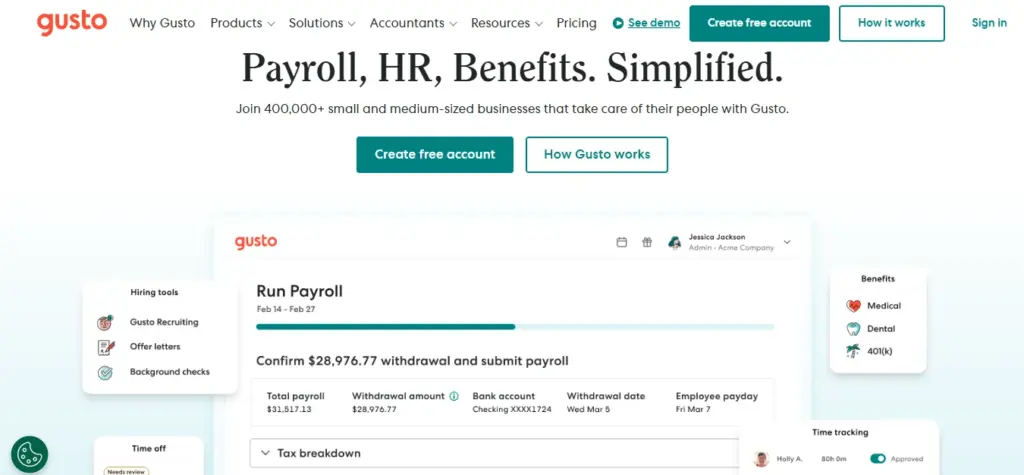
Specifications:
- Full-service payroll
- HR software for small businesses
- Benefits administration
- Time & attendance
- Employee self-service tools
Pros:
- Extremely easy to use
- Affordable pricing for SMBs
- Great payroll automation
- Excellent for U.S.-based businesses
Cons:
- Limited global support
- Not as strong in workforce scheduling
12. HiBob (Bob)
HiBob is a contemporary HRIS software that is centered on employee engagement, culture, and talent management. It’s ideal for contemporary startups and scaling businesses that focus on employee experience.
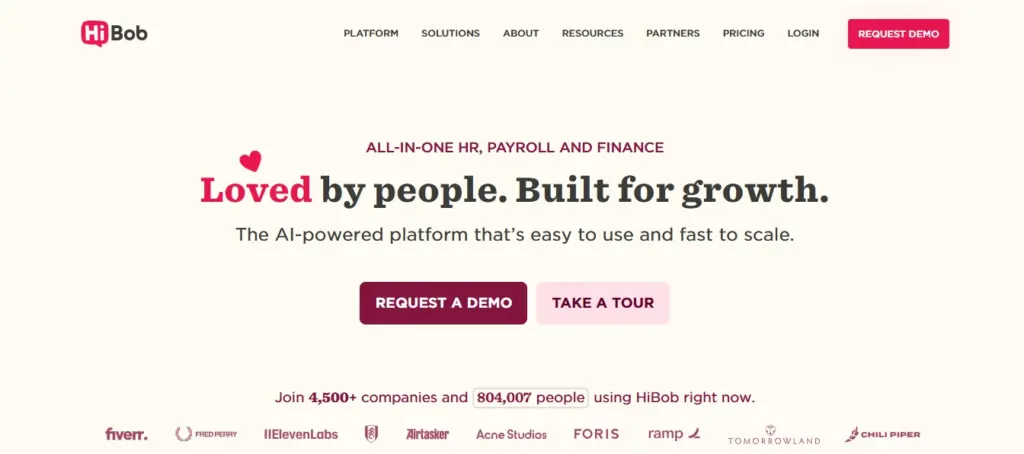
Specifications:
- HRIS & workforce management tools
- Employee engagement & recognition
- Talent management system
- Customizable workflows
- Strong integration ecosystem
Pros:
- Very modern, sleek design
- Strong focus on employee culture & engagement
- Great for remote/hybrid teams
- Scalable for growing companies
Cons:
- Can be pricey compared to others
- Limited payroll features
13. Teamwork
Teamwork is foremost project management software, but it is also an lightweight workforce management software by facilitating companies to manage employee tasks, time, and productivity.
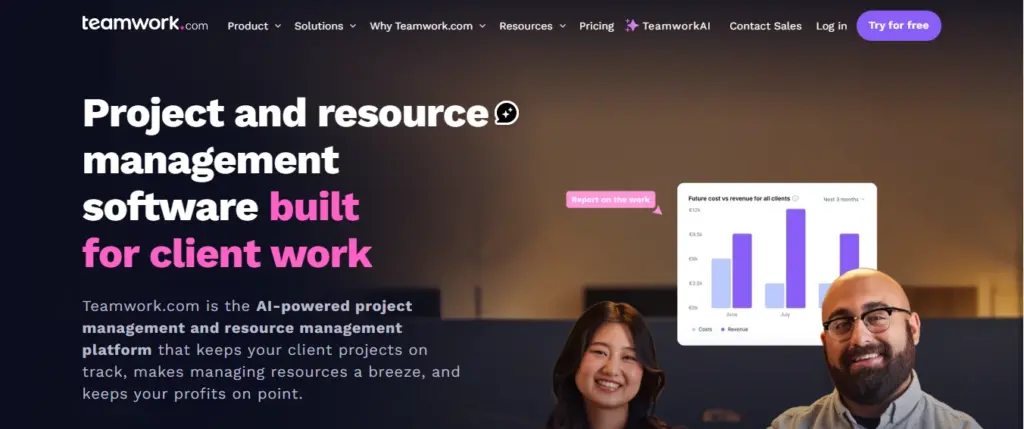
Specifications:
- Task & project management
- Time tracking & reporting
- Workforce scheduling software (projects, shifts)
- Collaboration tools
- Integrations with HR and payroll apps
Pros:
- Excellent for project-based businesses
- Great collaboration tools
- Easy to adopt for teams
- Affordable pricing
Cons:
- Not a dedicated HR or payroll system
- Limited compliance & workforce engagement features
I was able to implement the platform on my own. It helps in assigning the tasks to other employees, conducting surveys and polls, and much more. The ease of use and self-onboarding is something that I would like to appreciate.
Sonali, Kommunicate
Zimyo simplifies attendance management for our organization. The leave and attendance are so streamlined that we have never faced any difficulties with the system.
Anurag, Eggoz Nutrition
Comparison Table
Software | Ideal For | Standout Strength | Ease of Use |
Zimyo | Small & mid-sized businesses in India | Complete HRMS + payroll in one | Very easy, plug-and-play setup |
ADP | Large enterprises & compliance-driven industries | Decades of compliance expertise | Moderate, requires training |
Rippling | Fast-scaling startups & tech-first companies | HR + IT automation under one roof | Smooth once set up, slightly complex at first |
Humanity | Hospitality & healthcare providers with shift workers | Smart AI-driven shift scheduling | Simple drag-and-drop scheduling |
When I Work | Restaurants, retail stores, and hourly staff | Built-in team messaging + scheduling | Extremely user-friendly, minimal learning curve |
Asure | SMBs needing payroll + benefits management | Strong compliance tools for US laws | Straightforward, small learning curve |
Zoho People | Startups on a tight budget | Affordable HR suite with custom workflows | Highly intuitive with strong mobile support |
UKG Pro | Global enterprises with complex HR needs | Enterprise-grade workforce insights & analytics | Robust but requires onboarding support |
Dayforce | Companies with global payroll & compliance needs | Single employee record for all modules | Powerful but heavier learning curve |
BambooHR | Growing SMBs focusing on employee experience | Excellent talent & onboarding experience | Simple interface, popular with HR teams |
Gusto | US-based small businesses needing quick payroll | Automated tax filing + benefits for SMBs | Extremely simple, “set it & forget it” |
HiBob | Modern startups & remote-first teams | Culture & engagement-focused HRIS | Modern, sleek, very employee-friendly |
Teamwork | Agencies & project-driven teams | Combines project mgmt. with workforce planning | Clean, organized, minimal training needed |
Non-Negotiable Features in Workforce Management Software
Identify the must-have features for a small business before investing in a tool.
1. Time & Attendance Tracking
Reliable records of work hours, overtime, and break time. Avoids payroll conflicts and ensures compliance.
2. Workforce Scheduling Software
Drag-and-drop easy shift planning, automated conflict alerts, and mobile reminders.
3. Payroll & Compliance Integration
Integrated payroll provides accurate salaries and compliance capabilities to keep you in check with labor regulations.
4. Employee Self-Service Portals
Allow employees to review schedules, ask for time off, and change information – reducing HR burden.
5. Mobile Accessibility
Managers and employees can access it on the move through mobile apps.
6. Reporting & Analytics
Productivity, absence, and labor cost data dashboards to inform decisions.
How to Select the Best Workforce Management Software
Selecting the proper solution isn’t about picking the “flashiest” tool. It’s picking what is best for your business.
Step 1: Identify Your Business Needs
Do you primarily require scheduling? Or do you need a complete integrated workforce management solution with HRMS, payroll, and talent management?
Step 2: Establish Your Budget
Some solutions are budget friendly (Zimyo, When I Work), while others are premium (Dayforce, UKG).
Step 3: Search for Integrations
Make sure the software integrates with your current HR software, HRIS, or payroll system.
Step 4: Test Usability
Select a tool employees can easily get used to. Complex systems tend to frustrate.
Step 5: Consider Scalability
Select a tool that scales as your workforce grows. Don’t outgrow your system in a year.
Pro tip: Always sign up for a free trial to experience the software before buying.
Benefits of Workforce Management Software
The benefits of implementing WFM software extend far beyond time reduction.
- Increases Productivity – Managers have more time leading, and less time firefighting.
- Increases Accuracy – Payroll, scheduling, and compliance mistakes are cut significantly.
- Enhances Employee Engagement – Self-service and open scheduling empower employees and make them feel appreciated.
- Ensures Compliance – Integrated reminders prevent you from incurring expensive penalties.
- Cost Savings – efficient labor allocation reduces excess overtime.
- Data-Driven Decisions – Reports and analytics identify areas for improvement.
Bengaluru-based small retail chain used Zimyo, reducing payroll errors by 90% and saving 8–10 hours a week.
Common Mistakes to Avoid When Choosing WFM Software
Even the best tool fails if chosen or implemented poorly. Watch out for these pitfalls:
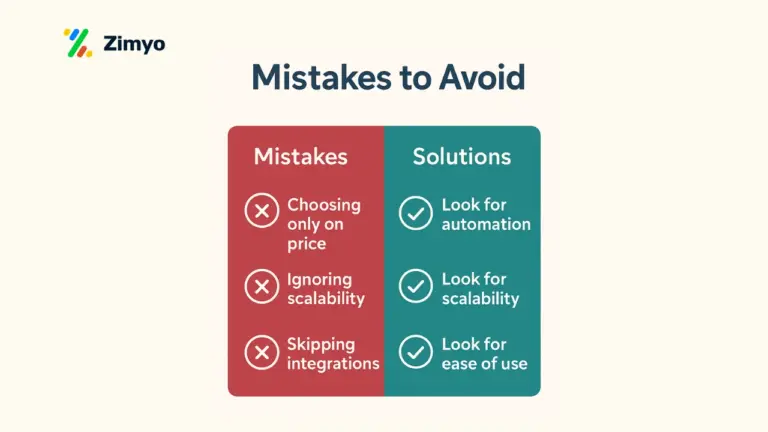
- Going for the cheapest option without evaluating features.
- Ignoring integrations with payroll or HRIS software.
- Overloading with features you’ll never use.
- Skipping employee training, leading to poor adoption.
- Not planning for growth, resulting in frequent tool changes.
What Else Does Zimyo Offer?
Where Zimyo excels as a workforce management tool, it’s more than scheduling and attendance. It’s a 360° HR suite that aids small and mid-sized companies in growing without the pains of growing. Some of the top-notch features that make Zimyo outstanding are:
- Applicant Tracking System (ATS) – Streamline hiring with smart candidate tracking, resume parsing, and interview scheduling, all in one place.
- Automated Payroll – Run error-free payroll in minutes, complete with tax filings and compliance, so you never miss a deadline.
- Performance Management – Set goals, track progress, and manage appraisals with ease, helping employees grow alongside your business.
Conclusion
People are one of the most challenging aspects of operating a small business but they don’t have to be. The right workforce management software makes sense of chaos.
Whether you require a workforce scheduling tool such as When I Work, a compliance-driven labor management software such as ADP, or an integrated workforce management software such as Zimyo, there’s a solution that’s right for you.
Don’t wait until scheduling mistakes or payroll errors waste you money and your employees. Embrace WFM software that’s right for your business today -and set yourself free to do what really counts: grow.
FAQs
What is the best HR software for a small business?
Zimyo is one of the best HR software solutions for small businesses. It offers payroll, attendance, performance, and employee engagement tools – all in one platform, making HR simple and affordable.
What is the best workforce management software?
Zimyo stands out for its ease of use, automation, and scalability. It helps small businesses manage scheduling, attendance, payroll, and performance without extra complexity.
What is the best small business management software?
For small business management, Zimyo provides more than HR, it integrates payroll, applicant tracking, and performance management, making it a complete solution for growing companies.
Is Workday a WFM system?
Yes, Workday offers a WFM (Workforce Management) system as part of its broader HR suite. However, for small businesses looking for a cost-effective and easier-to-implement solution, Zimyo is often a better fit.

